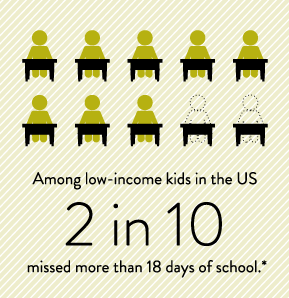United States is not following the trend followed by most of the developed countries of placing big bet on education investments. They believe that population should be educated to fill job needs in future, drive healthy economies, be a part of healthy economies and generate more income for tax receipts.

Between 2010 and 2014, US has started spending 3 percent less money in elementary and high school education even when the economy is strong and there’s a 1 percent increase in student population. In the same period, 35 countries have increased 5 percent investment per student in education. Some countries have increased educational investment as much as 76 percent between 2008 and 2014. The other countries got stalled in 2008 financial crisis and couldn’t invest in education.
However, there is not a clear relationship between money spent and student outcomes. Some countries spend way too less money on education than United States, and yet they consistently secure higher positions in international tests.
Yes, United States’ educational investments have declined but even then it spends more per student than most of the countries. US spent $11,319 per elementary school student in 2014, while the international average is $8,773 for 2014.
The reason some countries have better performance by spending less money is because they spend the money differently than US. A difference is that large classrooms are popular in Asia so that one good teacher can teach many, while in US money is spent on training more teachers rather than using current sources efficiently.
Another big reason US Education system differs from others is because teachers are overworked. In US, teachers teach around 1,000 hours annually while in Japan teachers teach for 600 hours only and 550 hours in Korea. These teachers specialize in one course, like Algebra 1, and teach only for some periods of a day. The rest of their week is spent in other activities –preparing lessons, or resolving queries of students.
In US teachers don’t have time for professional development, teacher collaboration, lesson preparation, working with students individually while that’s not the case in other countries.
The US spends a lot of resources and time in keeping class sizes smaller and hiring more teachers for the students.
National Center for Education Statistics in Washington DC has been tracking educational data. The data shows that educational investment for elementary and high school students has been falling for several years in a row from 2009 to 2013. The reason is ambiguous being a combination of federal, state and local budget cuts. Spending in education saw a sporadic increase during the 2013-14 school year, and it has been adjusting after that for inflation, yet is well below the peak of 2009.
US census report shows that middle class incomes are rising. It may appear that economy is flourishing just fine even with less expenditure on schools. But education is an 18-year, long-term investment that starts from pre-K to college. Maybe the smashed economic prospects won’t be visible for many years because of this divestment.
